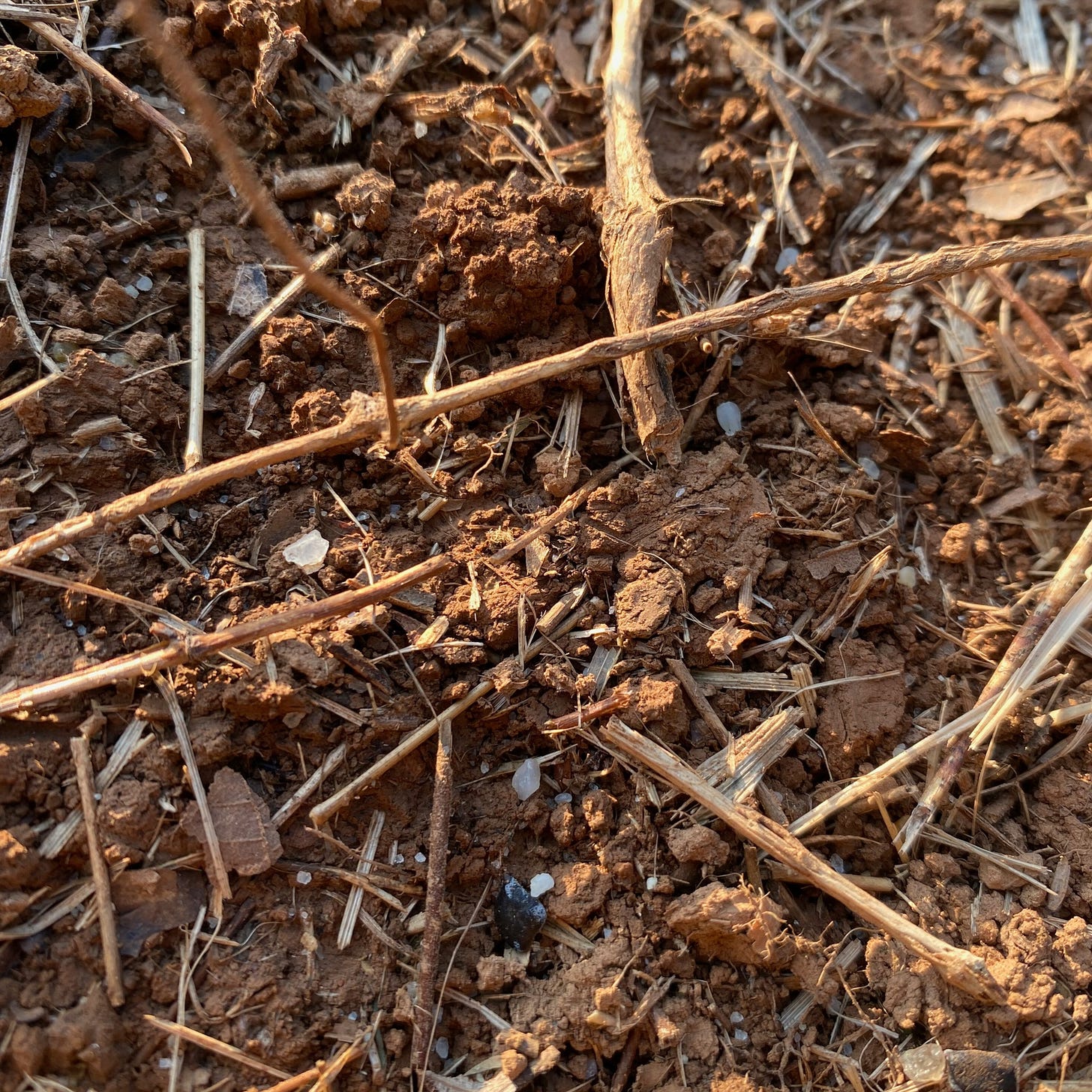Among the Wildflowers
One of the reasons I haven't written a ton about my work in the shop is that I haven't actually been doing a ton in the shop. Instead, I've mostly been focused on outdoor projects this summer, including the creation of some wildflower meadows. It's a project that actually started in April.
On the northwest corner of our property there are a couple of relatively open meadows, including one patch nestled between the road and the woods. This patch gets a ton of sun and we decided it would make the perfect place for a native wildflower meadow.
Prepping the Field
When we moved in almost a year ago, most of the area was thick with reedy two-foot-tall grass that, if we wanted wildflowers to take root, needed to go. Easier said than done. To make that happen, I made multiple passes with the tractor, successively reducing the height with each go. After four or five passes, I was able to knock the material down to about one inch, plus a considerable amount of "mulched" grass on top.
With the the grass chopped down, the next step was to lay thick black plastic on top. The plastic would block any sunlight from reaching the grass and would also "solarize" or bake the material. Hot sun + black plastic + time = dead plants.
Cyn and I rolled out two 20-foot by 100-foot sheets of 6 millimeter-thick plastic sheets, overlapping them slightly and weighing them down with concrete blocks and other heavy material. We knew we'd have to leave the black plastic in place for at least two months — maybe longer — in order to kill off existing roots. I admit, it's a little odd to be creating a "natural" environment by using loads of plastic to kill plants, but this is the world we live in.
That was mid-April. Throughout the spring and early summer, Cyn and I would impatiently peel back a corner of the plastic to see how the solarizing was progressing. Amazingly — and frustratingly — the weeds were incredibly resilient. Whereas any house or garden or greenhouse plant I want to survive seems to be teetering on the brink of death at any moment, the weeds under this inhospitable black plastic death sheet were like, "Still here, bitch."
While we waited, we ordered five pounds of Southeast Native Wildflower seeds from American Meadows. It arrived far before the ground was ready, so I stashed the seeds in the basement until, finally, in mid June, we peeled back the black plastic and saw nothing but dead, brown grass and red dirt. It was time for Phase 2.
Tilling, Sowing, Waiting
I picked up the cement blocks and pulled the plastic off the dirt. Although there were still some — incredibly — green shoots, nearly all of the grass was dead. I rented a large tiller from the local Home Depot and ground up the soil and organic material to create a good surface for the seeds.
Concerned about my ability to evenly distribute the seeds, I followed a tip that suggested mixing the seeds with an equal amount of sand. This would help dilute the mixture and also make it easier to see on the ground what territory I had covered. I spilled half the bag into a bucket and mixed it 1:1 with sand. Then I poured the mixture into a spreader and got busy spreading my... uh, never mind.
I walked North-South across the field until the spreader was empty. Then I re-filled it with the remaining seed and sand and made another set of passes, this time walking East-West. By following this criss-cross pattern, I was sure the entire area was evenly covered.
Then, following the directions of the seed company, we got a lawn roller and passed over the entire patch to push the seed into firm contact with the soil. The seeds don't need to be buried, but they are supposed to be firmly in contact.
We then linked together six 75-foot hoses to bring water from the house down through the wood and to the field. There was no sense in doing all this work if the seeds were just going to dry out. We needed to make sure they had plenty of water so they could survive and thrive.
Day after day we watered and waited. We watched, searching for signs of growth. Pretty quickly we saw green shoots emerge, though we instantly realized most were the resurrection of the grasses we had tried to kill. At first we were disappointed, but then upon closer inspection we spotted tiny green leaves breaking free of the soil and reaching toward the sun. The wildflowers were alive!
Letting 1,000 Flowers Bloom
Within several weeks, the wildflowers had filled the tilled field. Though they stood only an inch or two tall, they were well on their way. Then, by the end of July, the first buds started to appear. And within a few more days, the field was filled with yellow and red flowers, buzzing with bees, butterflies, and birds.
As the field blossomed, we set to work — reminder, we're insane — expanding it. When I first pulled the plastic back, I decided that the 40-foot by 100-foot patch was too small. So, I moved one sheet over to expand it to 60 x 100. Meanwhile, I moved the second sheet up to a hill overlooking the house and our greenhouse for a second wildflower patch.
After two months of solarizing those two "expansion" fields, we recently tilled and sowed them as well, adding additional seed combinations — flowers for fall, partial shade, and pollinators — to the mix. Our hope is that before the growing season ends, the lower filed and the upper hill will be alive with color and pollinators.
It will be fun and interesting to see how the wildflowers grow and change over the seasons and years. Some of the flowers are perennials, while others are biennials (blooming every other year). And some are annuals, meaning they die off at the end of the season. Already we see the beautiful yellow and red coreopsis getting overtaken by scarlet sage.
The seed company suggests mowing the field once a year, cutting the growth back to the mower's highest settings. That should, I hope, re-disburse the annual's seeds and allow a new generation to blossom. For now, though, we are just sitting back and enjoying the show.










